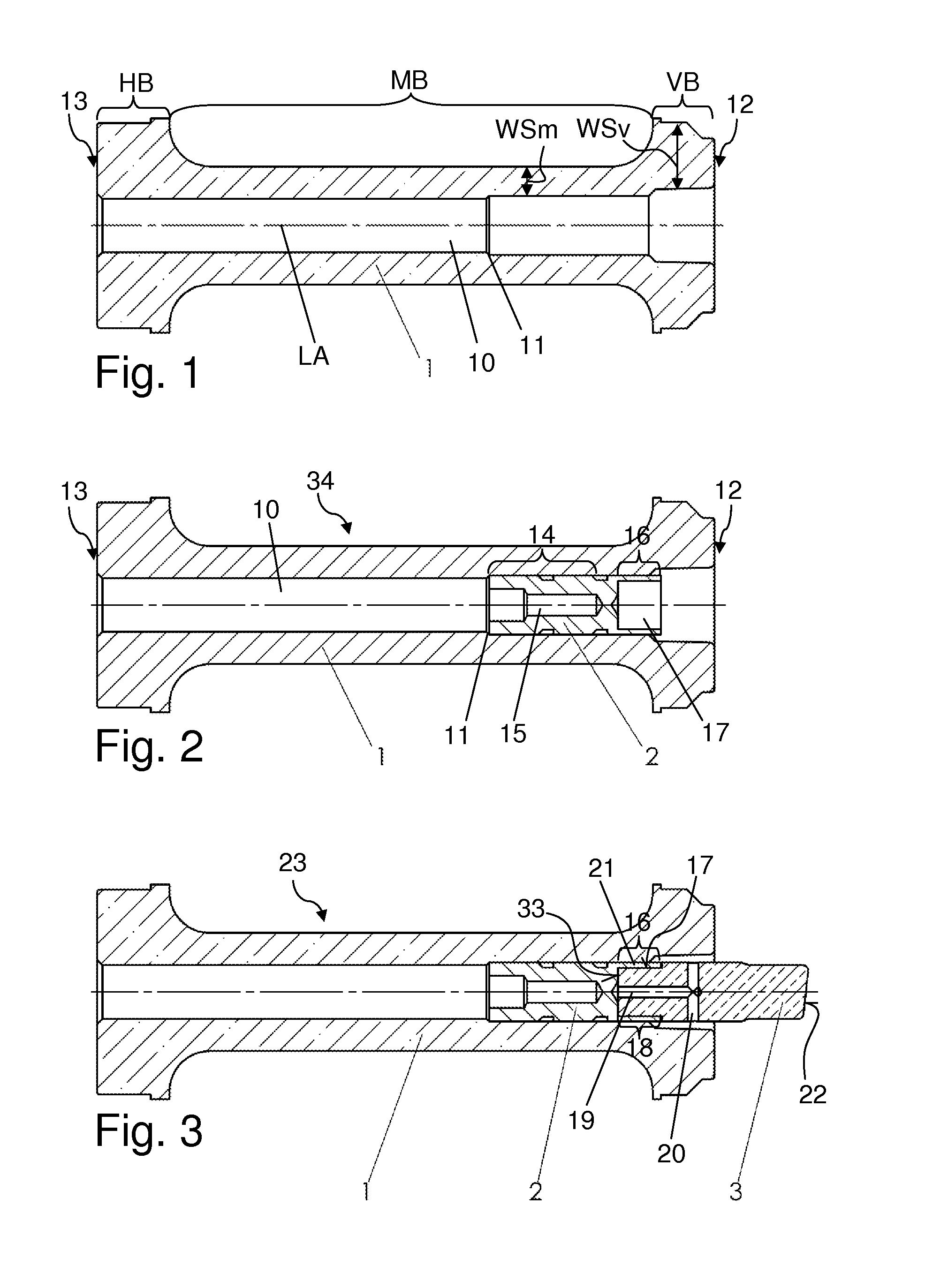Two-Part high voltage vacuum feed through for an electron tube
- Summary
- Abstract
- Description
- Claims
- Application Information
AI Technical Summary
Benefits of technology
Problems solved by technology
Method used
Image
Examples
Embodiment Construction
[0052]FIGS. 1 through 3 show the production of an inventive high voltage vacuum feed through in different chronologically successive stages.
[0053]A ceramic insulating body 1 is initially produced or provided, cf. FIG. 1. In the present case, the insulating body 1 is produced from aluminium oxide ceramic material, e.g. through slip casting or other conventional forming technologies, followed by sintering. If desired or required, the Al2O3 ceramic material may contain sintering aids or other additives for optimizing the production process or the quality of the sintered ceramic material in a manner known per se.
[0054]The insulating body 1 is substantially configured to be tubular and has, in particular, a continuous hollow space 10 that extends in a longitudinal direction (cf. longitudinal axis LA) similar to a bore. The insulating body 1 is rotationally symmetrical with respect to the longitudinal axis LA in this case. The hollow space 10 has a step 11 that serves as a stop for a rear...
PUM
 Login to View More
Login to View More Abstract
Description
Claims
Application Information
 Login to View More
Login to View More - R&D
- Intellectual Property
- Life Sciences
- Materials
- Tech Scout
- Unparalleled Data Quality
- Higher Quality Content
- 60% Fewer Hallucinations
Browse by: Latest US Patents, China's latest patents, Technical Efficacy Thesaurus, Application Domain, Technology Topic, Popular Technical Reports.
© 2025 PatSnap. All rights reserved.Legal|Privacy policy|Modern Slavery Act Transparency Statement|Sitemap|About US| Contact US: help@patsnap.com



